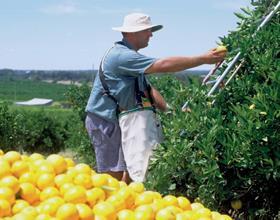
The larger size profile of the 2010 Australian navel orange crop should bode well for exports to the US, which is coming off the back of a Californian season that has run into June, and has been marked by excellent fruit quality.
'The large sizes should affect things positively,' said Dennis Hodgson, general manager with Riversun, which coordinates a large percentage of Australia's citrus exports to the US.
'Preferred sizes are 48s and 56s and we're expecting a good volume of those. Last year we had an overabundance of small fruit, this year's we've got the opposite.'
Australian exporters ran into trouble last season, in the form of huge navel volumes from Chile which threatened to pull the rug from under their feet.
'They had an exceptional year last year with large fruit,' Mr Hodgson conceded.
Richie Roberts, from major Australian citrus supplier AgriExchange, which markets its citrus fruit under the Vitor brand, agreed with Mr Hodgson.
'Details on Chilean production are scarce, but you'd assume their volumes are going to be high again this year, as they would be from Peru and South Africa,' Mr Roberts told Fruitnet.com.
Mr Hodgson said Riversun shipped its first container to the US on 23 May, and although packing was slow initially, by early-June they were sending containers weekly and volumes were expected to ramp up throughout June.
Russell Witcombe, managing director of Mildura Fruit Company, said the first of his company's navels are on the water and were scheduled to arrive in the US on 18 June.
MFC will be marketing under the new brand of Red Earth this year. The Mildura region's first inhabitants were the Latje Latje aboriginal tribe, and the word Mildura is actually Latje Latje for ‘red earth'.
He anticipates MFC will ship around 250-300 40ft containers of navels to the US this year, and between 120 and 150 containers of mandarins.
As the campaign gets underway, one factor giving all Australian fruit exporters cause to smile is the recent slide of the Australian dollar against the greenback. Having spent much of the year over US$0.90, A$1 is now buying US$0.84.
'The weakening Aussie dollar is obviously very good news for all Australian exporters,' Mr Roberts said, while Mr Hodgson was equally happy.
'It's marvellous,' he said. 'Let's hope it keeps going.'



